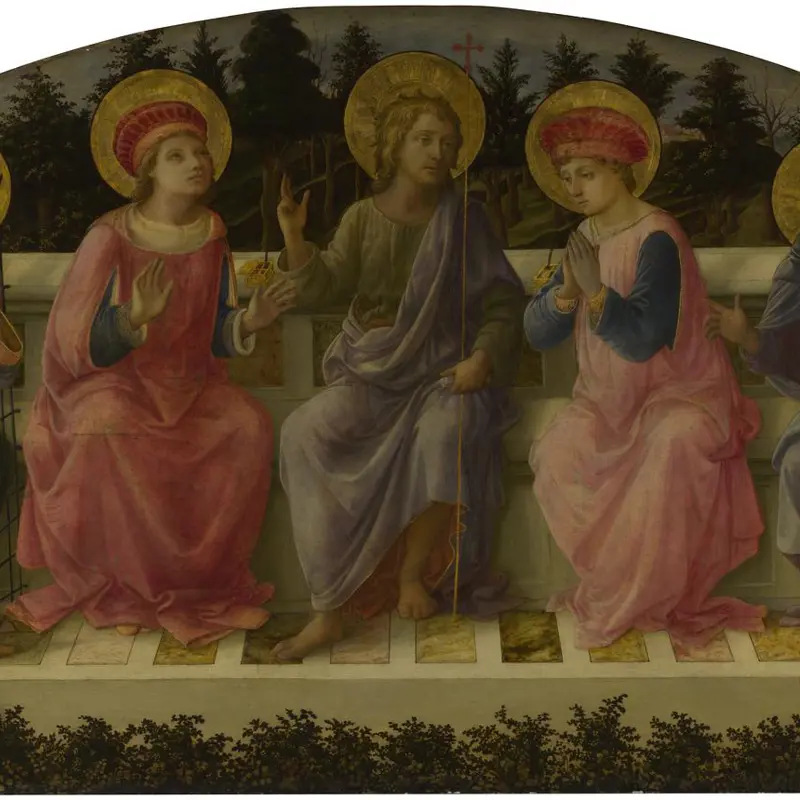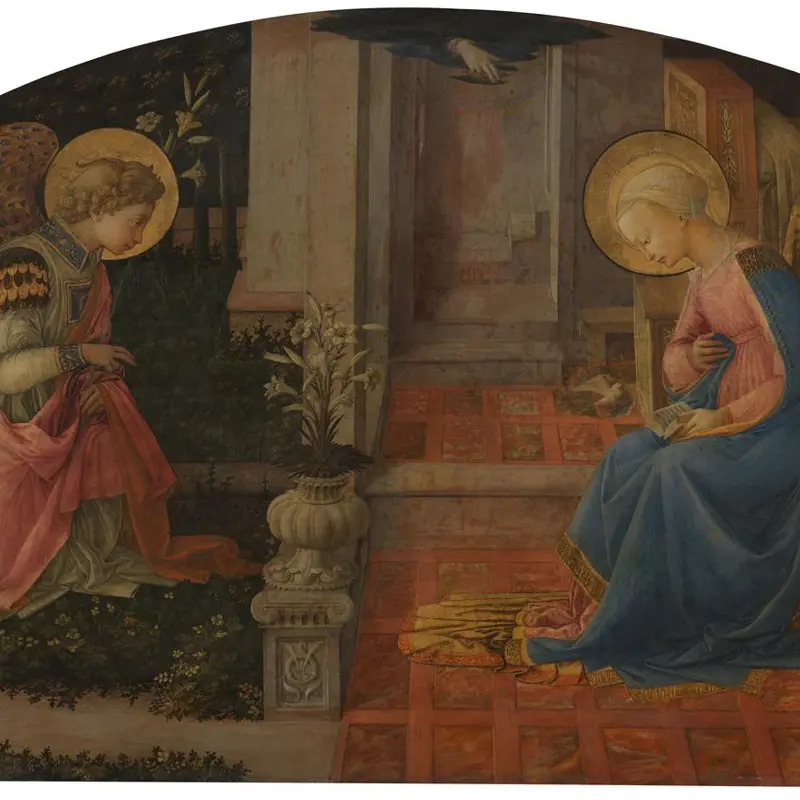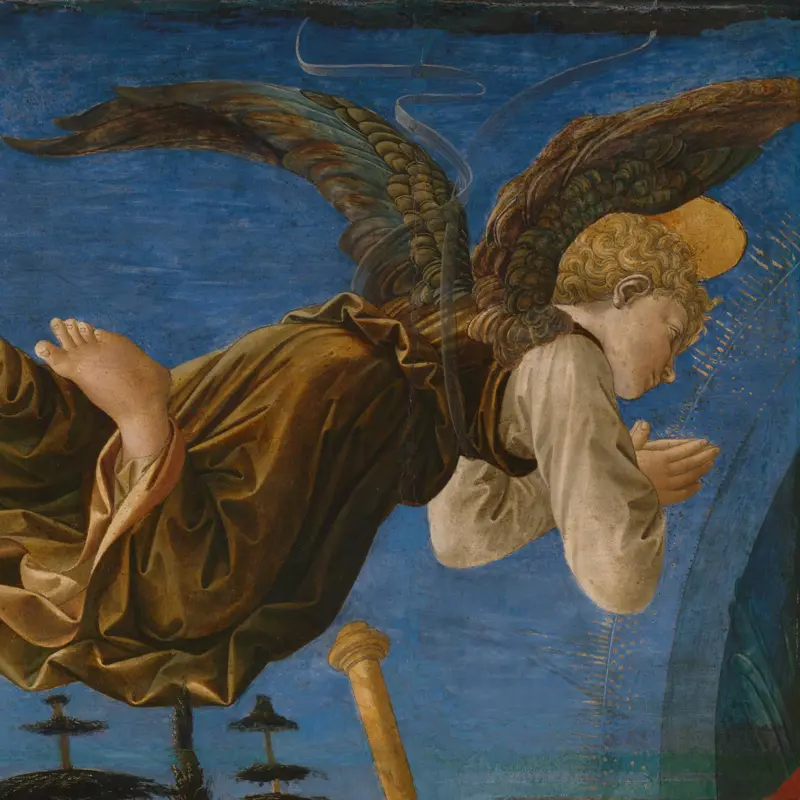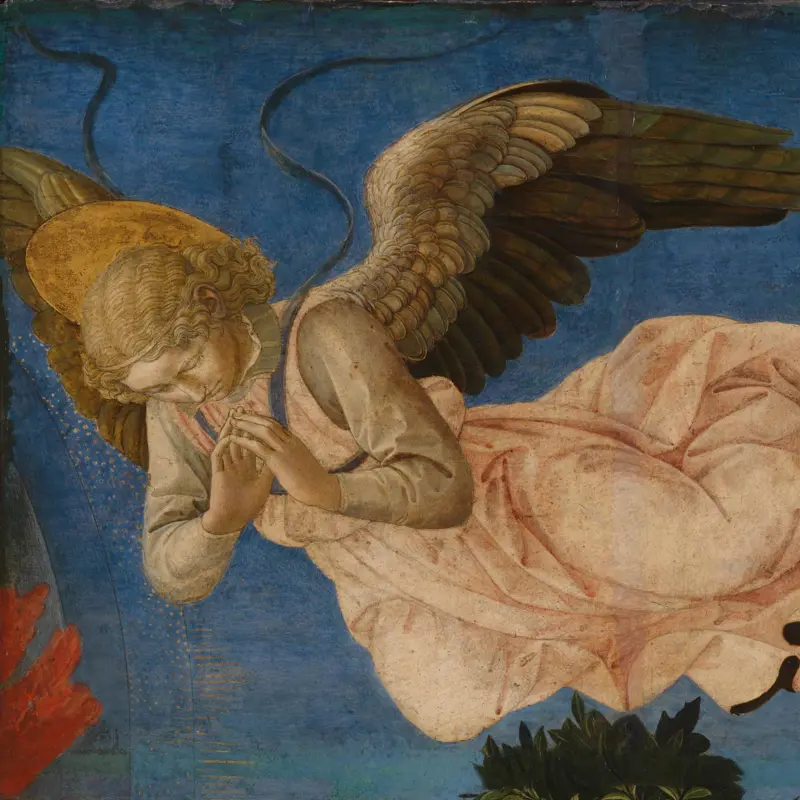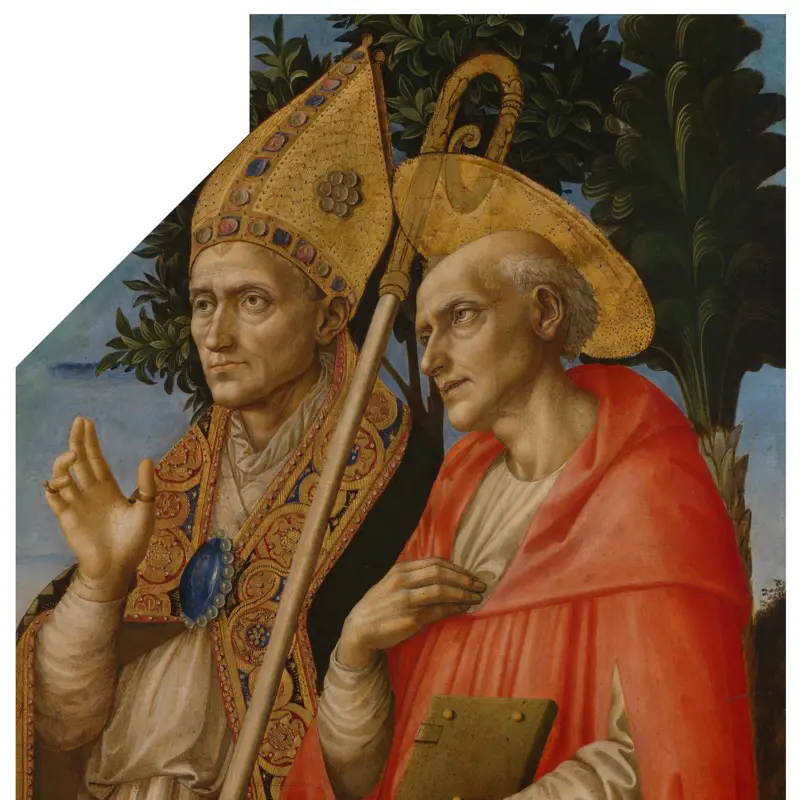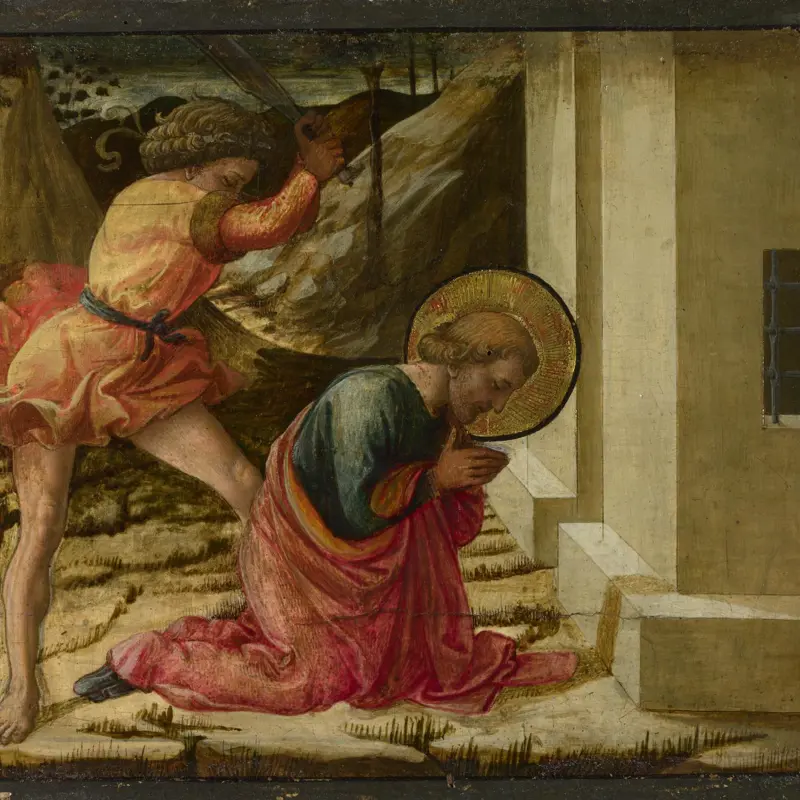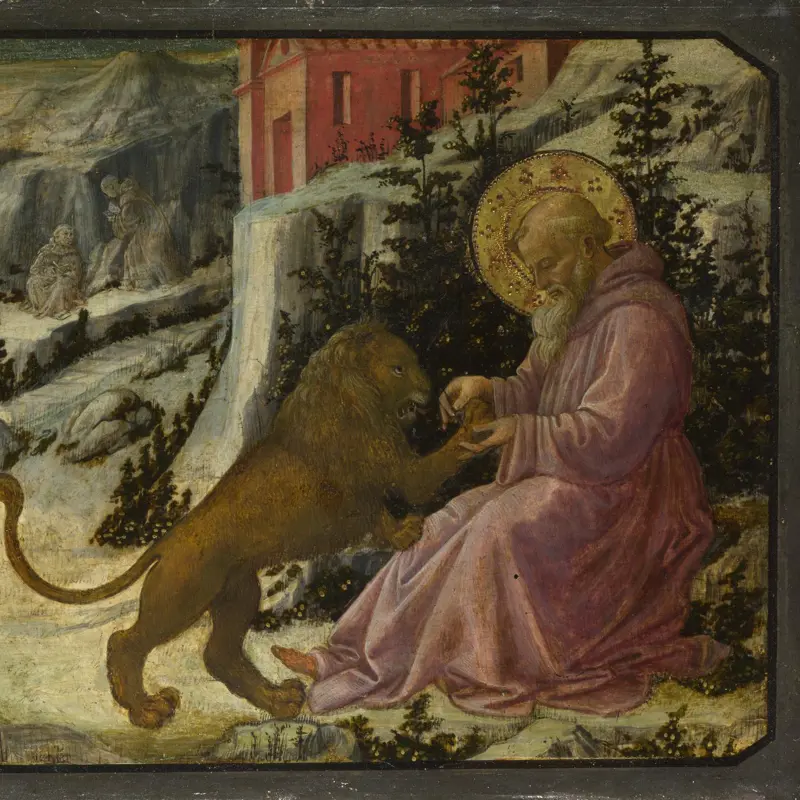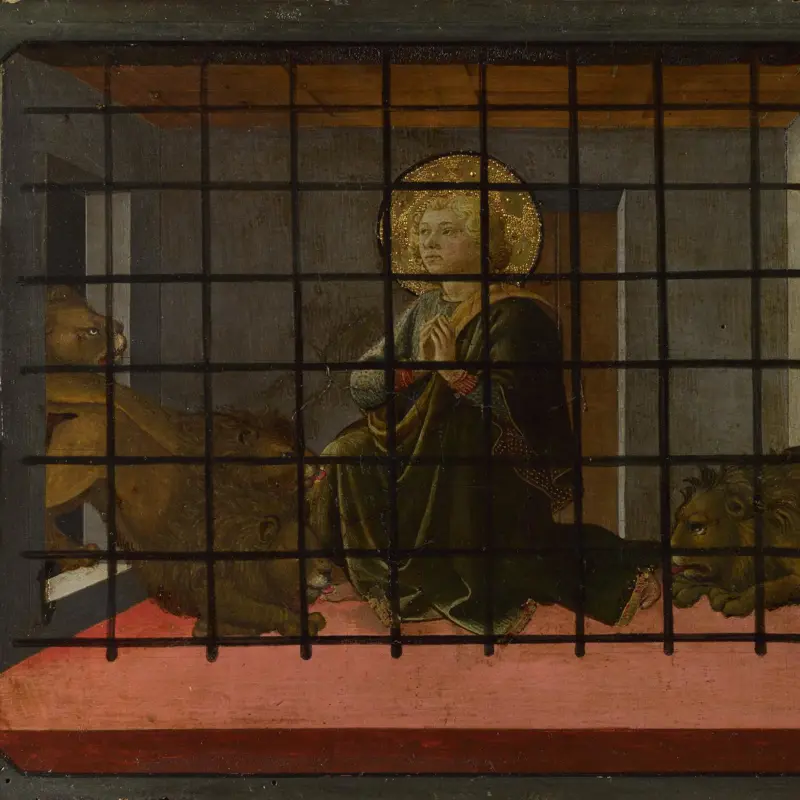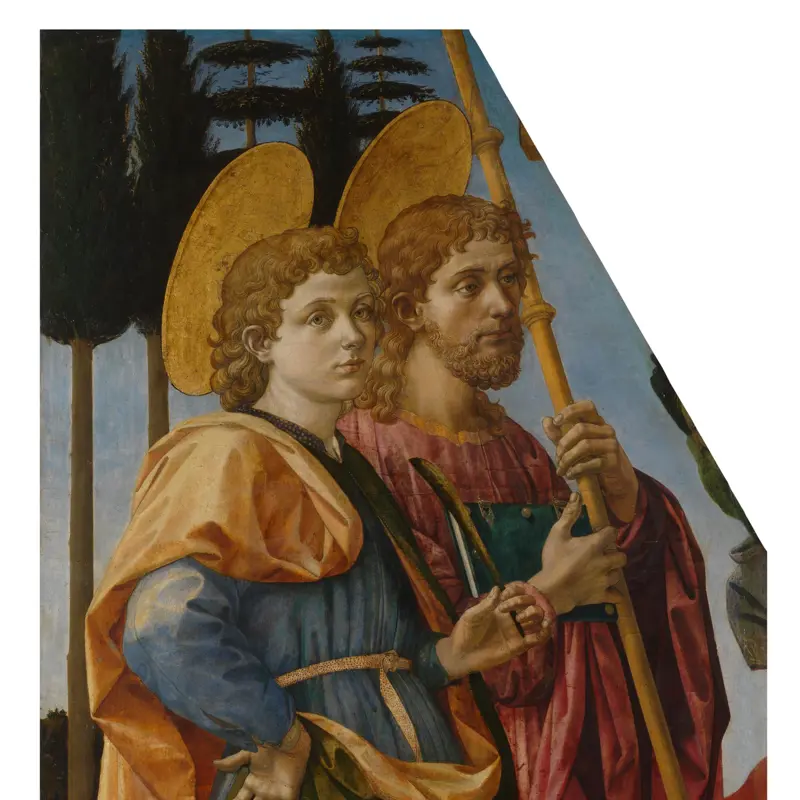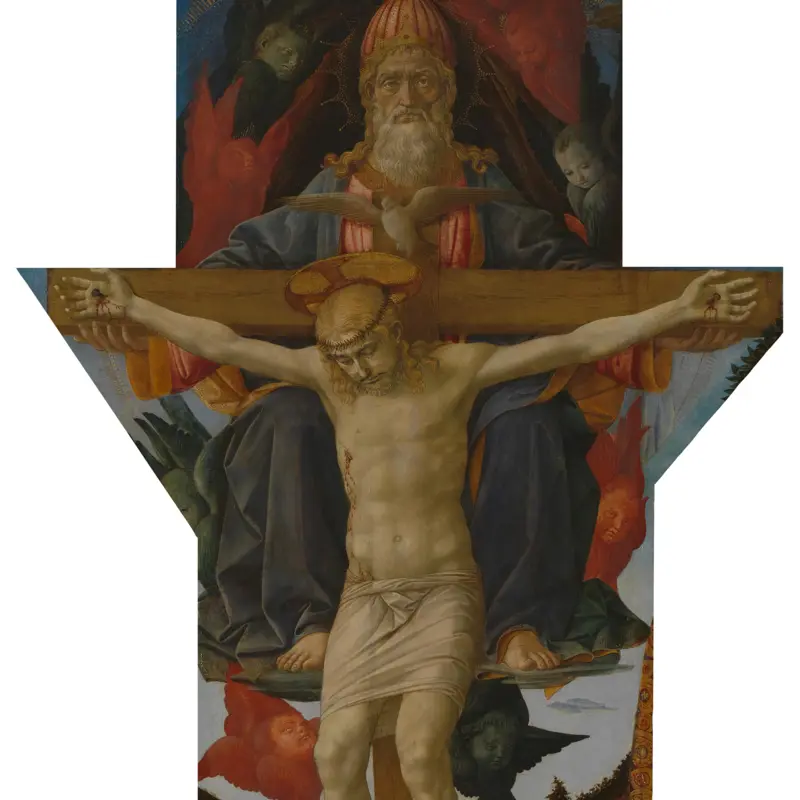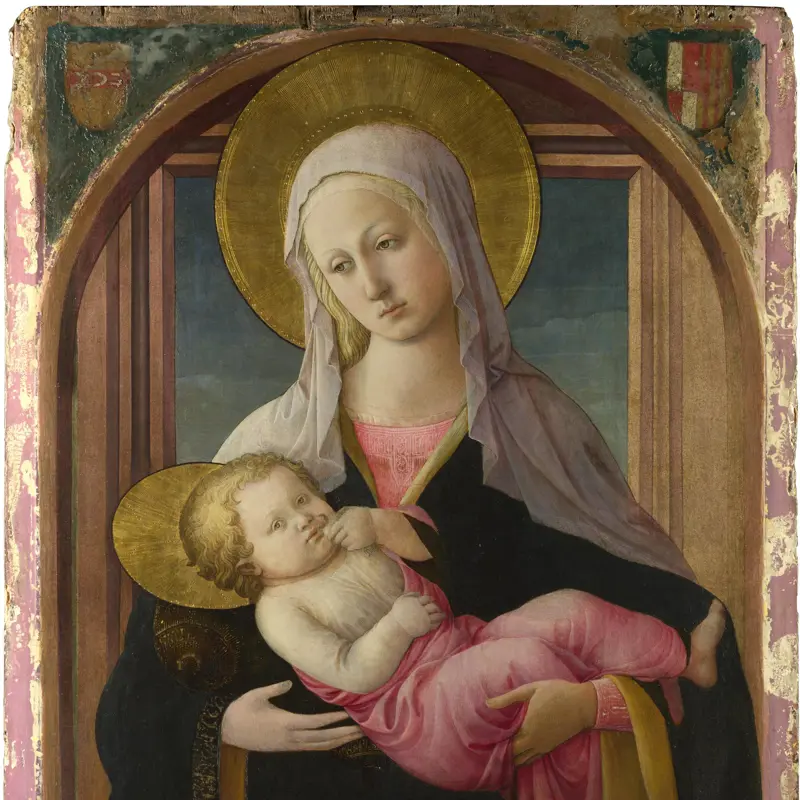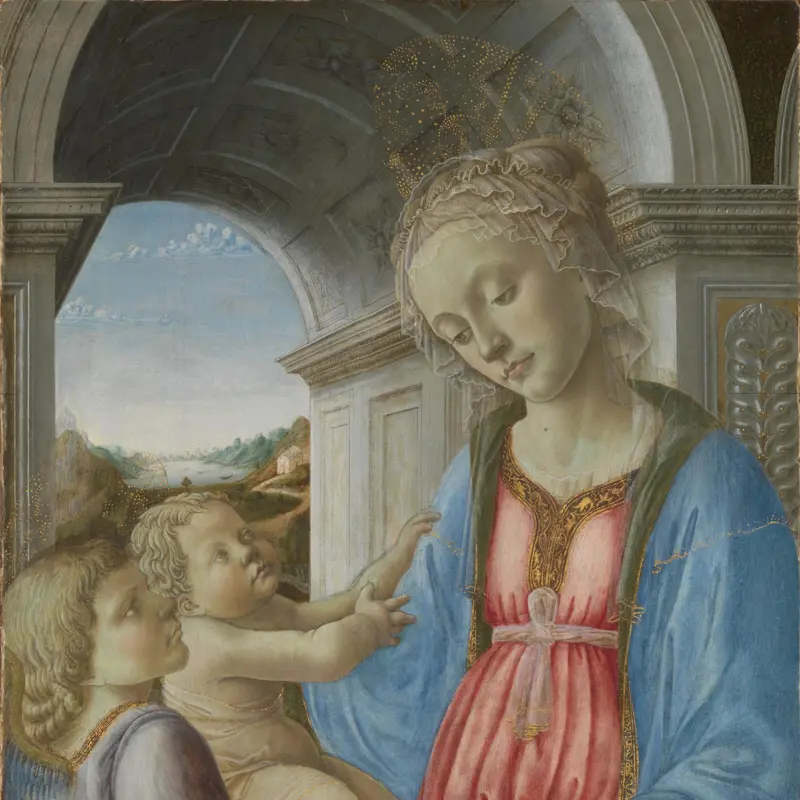Fra Filippo Lippi, 'Saint Bernard's Vision of the Virgin', 1447
About the work
Overview
This panel shows a twelfth-century monk, Saint Bernard of Clairvaux, having a vision of the Virgin Mary. It is shaped like an ‘overdoor’ – a picture designed to hang above a doorway – and was probably made to decorate the Palazzo Vecchio (the town hall) in Florence; Saint Bernard was patron saint of the building.
Bernard is depicted wearing a simple hooded cloak, seated in a rocky wooded setting. He has retreated there to read, write and immerse himself in spiritual contemplation; craggy rocks serve as a seat and desk. The paint surface is very worn but very faint traces of a pen in his right hand are still visible and his ink stand sits on top of his writing box.
Lippi’s son Filippino made a painting of this subject in which the Virgin is clearly dictating to the saint – our picture probably tells the same story.
Key facts
Details
- Full title
- Saint Bernard's Vision of the Virgin
- Artist
- Fra Filippo Lippi
- Artist dates
- born about 1406; died 1469
- Date made
- 1447
- Medium and support
- egg tempera on wood
- Dimensions
- 94.3 × 106 cm
- Acquisition credit
- Bought, 1854
- Inventory number
- NG248
- Location
- Not on display
- Collection
- Main Collection
Provenance
Additional information
Text extracted from the ‘Provenance’ section of the catalogue entry in Dillian Gordon, ‘National Gallery Catalogues: The Fifteenth Century Italian Paintings’, vol. 1, London 2003; for further information, see the full catalogue entry.
Bibliography
-
1845F. Baldinucci, Notizie dei professori del disegno da Cimabue in qua, ed. F. Ranalli, 5 vols, Florence 1845
-
1850Mrs Jameson, Legends of the Monastic Orders, London 1850
-
1854Christie & Manson, Catalogue of the Very Choice Collection of Pictures of E. J. de Bammeville, Esq., London, 12 June 1854
-
1878G. Vasari, Le vite de'più eccellenti pittori, scultori ed architettori: Con nuove annotazioni e commenti di Gaetano Milanesi, ed. G. Milanesi, 8 vols, Florence 1878
-
1902I.B. Supino, Fra Filippo Lippi, Florence 1902
-
1903J.A. Crowe and G.B. Cavalcaselle, A History of Painting in Italy, Umbria, Florence and Siena, from the Second to the Sixteenth Century, ed. R.L. Douglas, 2nd edn, 6 vols, London 1903
-
1909H. Mendelsohn, Fra Filippo Lippi, Florence 1909
-
1923R. van Marle, The Development of the Italian Schools of Painting, 19 vols, The Hague 1923
-
1932B. Berenson, 'Fra Angelico, Fra Filippo e la cronologia', Bollettino d'arte, XXVI, 1932, pp. 1-22, 49-66
-
1942R. Oertel, Fra Filippo Lippi, Vienna 1942
-
1949M. Pittaluga, Filippo Lippi, Florence 1949
-
1951Davies, Martin, National Gallery Catalogues: The Earlier Italian Schools, London 1951
-
1961M. Davies, The Earlier Italian Schools, 2nd edn, London 1961
-
1975G. Marchini, Filippo Lippi, Milan 1975
-
1978J. Mills and R. White, 'Organic Analysis in the Arts: Some Further Paint Medium Analyses', National Gallery Technical Bulletin, II, 1978, pp. 71-6
-
1979M. Lesher, The Vision of Saint Bernard and the Cult of the Priors: Private and Public Images of Bernard of Clairvaux in Renaissance Florence, Phd Thesis, Columbia University 1979
-
1981D.L. Clark, 'Filippino Lippi's The Virgin Inspiring Saint Bernard's Homilies and Florentine Humanism', Studies in Iconography, VII-VIII, 1981, pp. 175-87
-
1984A. Luchs, 'Saint Bernard in the Wilderness', in B. Chauvin (ed.), Mélanges à la mémoire du Père Anselme Didier, Pupillin 1984, vol. 2.3, pp. 348-54
-
1986Davies, Martin, National Gallery Catalogues: The Earlier Italian Schools, revised edn, London 1986
-
1990L. Dal Prà, Bernardo di Chiaravalle nell'arte italiana dal XIV al XVIII Secolo (exh. cat. Certosa di Firenze, Pinacoteca, 9 June - 9 September 1990), Milan 1990
-
1992M.B. Hall, Colour and Meaning: Practice and Theory in Renaissance Painting, Cambridge 1992
-
1993J. Ruda, Fra Filippo Lippi: Life and Work with a Complete Catalogue, London 1993
-
1993F. Ames-Lewis, 'Art in the Service of the Family: The Taste and Patronage of Piero de Cosimo de' Medici', in A. Beyer and B. Boucher (eds), Piero de'Medici 'il Gottoso' (1416-1469), Kunst im Dienste der Mediceer: Acts of a Conference held in Bad Homburg, 1991, Berlin 1993, pp. 207-20
-
1995M. Boskovits, 'Attorno al tondo Cook: Precisiazione sul Beato Angelico su Filippo Lippi e altri', Mitteilungen des Kunsthistorischen Institutes in Florenz, I, 1995, pp. 32-67
-
2001
C. Baker and T. Henry, The National Gallery: Complete Illustrated Catalogue, London 2001
-
2003Gordon, Dillian, National Gallery Catalogues: The Fifteenth Century Italian Paintings, 1, London 2003
About this record
If you know more about this work or have spotted an error, please contact us. Please note that exhibition histories are listed from 2009 onwards. Bibliographies may not be complete; more comprehensive information is available in the National Gallery Library.

